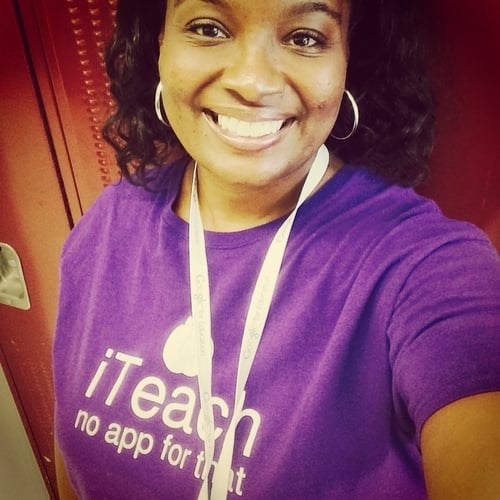-

Community organization/partner
Former Umoja Student Development Corp.
My story
I am a product of the Chicago Public Schools, but I’m also so much more. I am a proud descendant of indigenous nations in the American South and African slaves from Guinea-Bissau and other nations brought to America’s shores during the TransAtlantic Slave Trade. I was born in Alabama, but recognize that my life on the Southside of Chicago is a result of my family’s arrival here as part of the Great Migration. By society’s standards, I am a minority - a member of several disenfranchised groups, but the strength and tenacity of my ancestors prevented me from seeing myself this way. I was raised to believe that everyone has a mission of service in the world and my calling came in the world of education. I have dedicated my life to serving the needs of youth and adult learners as a teacher, instructional leader, and ultimately, as an Education Specialist. Creating and holding spaces for those that have been marginalized to learn, contribute, and thrive is at the core of my practice. My life and work are inevitably intertwined, but I believe this is the way it was intended to be.
Why I choose to engage in equity work
As a graduate of Chicago Public Schools and lifelong Chicagoan, I've experienced inequity and exclusion firsthand. My earliest memories go back to kindergarten - having to leave my neighborhood school because they didn't have the resources to facilitate curriculum rigorous enough for me and several classmates who achieved above grade level standards. Subsequently, I was "bussed" to a predominantly White elementary school on the Southwest side, where I heard the N-word for the first time and was excluded from play because of my color. I remember the exclusionary tactics of being "tracked" in 8th grade and the rifts that caused between the so-called "Gifted kids" and the "Regular Kids." The pain was real in the bullying tactics I endured, but in hindsight I know the scarcity, juvenile violence, and the inability of the adults in those schools to protect their students of color was representative of the system. That's why when I became a teacher, I was adamant about my need to serve Black, Latinx and Indigenous students in particular. I am passionate about the need to build trust and rapport within schools and between schools and the community, which starts with ensuring equitable resources for all students and also, improving the climate and culture of every school. When a family walks into a school building, they should feel a sense of belonging and see evidence of the City's commitment to giving their child the very best to put them on the road to postsecondary success, rooted in promoting SEL, youth agency, and liberation.
My equity challenge and how I work on it
In the past, schools were the heart of a community - places of multigenerational, multi-tiered collaboration, and partnership. I wanted to create a project that would require an intergenerational transmission of knowledge - teachers, community artists, students, and other community members all working together to design solutions to social problems. My change idea, the Ujima Design Project (UDP), is based on five opportunity gaps: a lack of arts-integration programs in schools; a collaboration between schools & the communities they’re in; awareness of community and human resources available to students, families, and schools; a devaluing of artistic expression as an extension of culture, identity and agency and a devaluing social-emotional development. Ujima (oo-jee-mah) means “collective work & responsibility.” My challenge was to create learning opportunities that highlight student creativity and promote learning environments that place students at the center - putting young scholars in the driver’s seat when it comes to demonstrating what they know, understand, and are capable of doing. The UDP is liberatory at its core because it encourages students to identify an area of need, create a hypothesis of how to resolve the issue, and then, go through the steps of the design thinking process to come up with a solution that is presented to a broader audience.
What sustains me when equity work stalls, how do I stay motivated when the work gets hard, and how do I push myself and others to advance equity
Remembering the sacrifices that my ancestors endured to allow me the opportunity to get a good education, sustains me when the work stalls. My grandparents weren't able to even finish elementary school in Alabama, but they instilled in their children the need to get an education so they could do something in the world. All those times I sat in the back of my mom's city college classroom, I was imbued with a love of teaching, learning and service. I have always said that this work, for me, is "a calling." For that reason, no matter how frustrating work may get, I always have to answer when "the call" comes. Everyone has "a call" or purpose, it's my job to hold space for others to explore what that might be.
Additional thoughts
When we speak of equity in terms of real estate holdings, we're talking about the just right to future profits or reaching a goal of "building up equity" in a house, for example. Our work in education should be similar. Until ALL of our students have an equal claim, stake, and rights to ALL the future has to offer them, based on the kinds of learning environments and educational opportunities we create with them, our work is not done.
